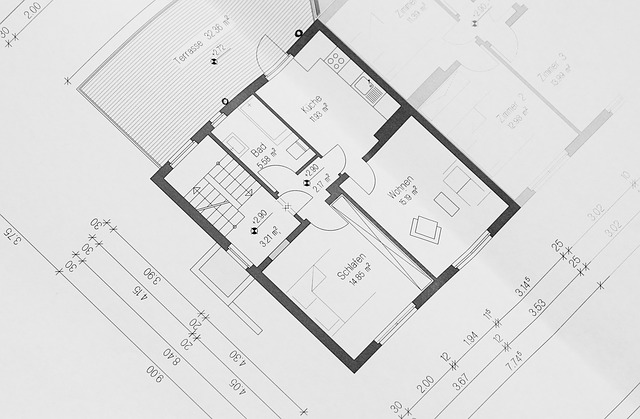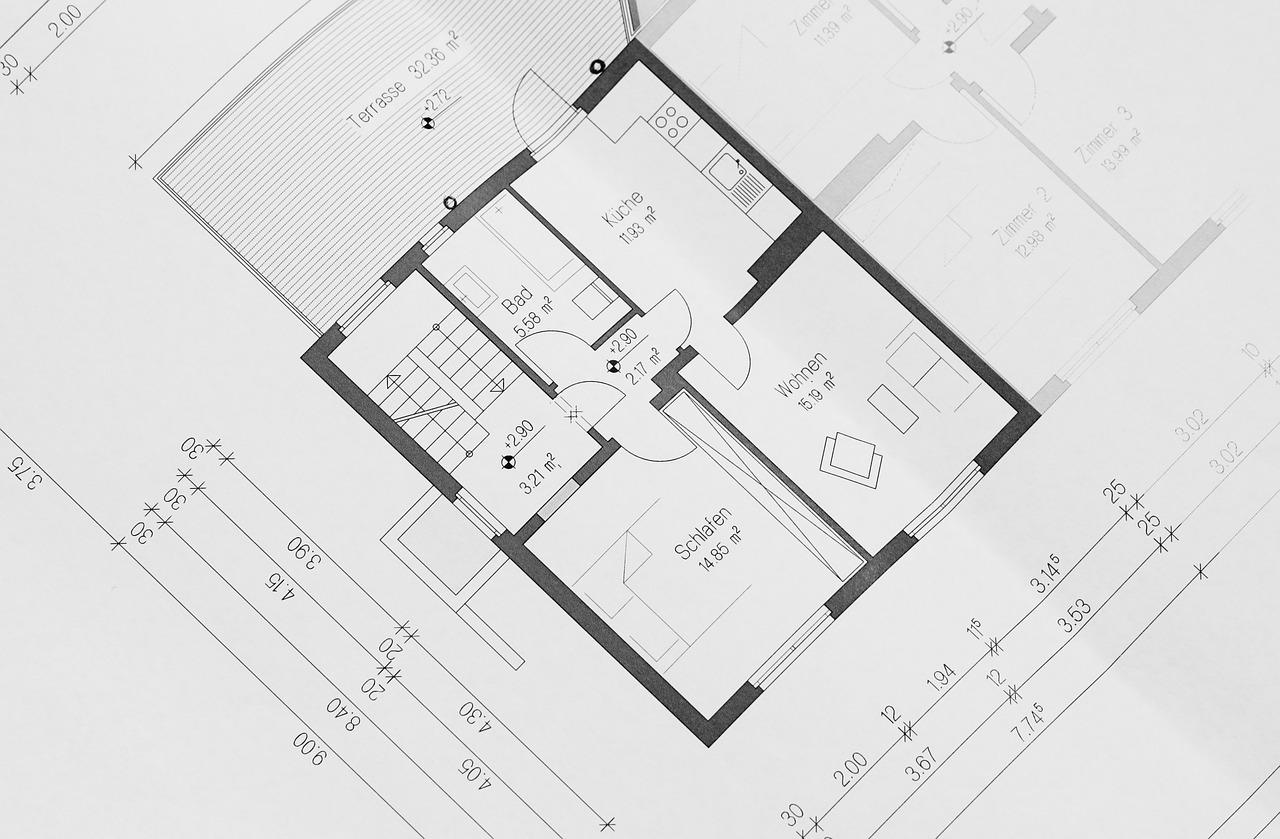Last Updated on March 8, 2023 by Eng Katepa
This is a common question, What is an Architect? By definition, An architect is a skilled professional who plans and designs buildings and generally plays a key role in their construction. Architects are highly trained in the art and science of building design. Since they bear responsibility for the safety of their building’s occupants, architects must be professionally licensed.
Moreover, an architect is a person professionally engaged with maintaining the health and safety of the building occupants. So, to become a professional architect, you will need to have a legal license or proper authorization from the government.
From this point of view, Buildings are a fundamental part of the human experience. We live, work, shop, learn, worship, seek care, and spend our leisure time inside these structures—and we evaluate them based on how effectively they serve their specific purposes. In every case, the design of modern buildings is the work of essential craftspeople: that’s why we are talking about an architect.
As a leader of various projects, from something as small as an addition to someone’s home to something as large as a hospital, college campus, or an entire neighborhood, the role of an architect is to bring together the creative ideas and visions of the client and keep in mind the needs of those that will be using the space.
Also Read: Best CAD Software For Architects | All You Need to Know
Origin Of Architects in the World
The word “architect” in English has its roots in the Greek “arkhitektõn,” which means “chief builder.” But, it actually originates from the Latin “architectus” which comes from the Greek “arkhitektõn” as well. If we consider the history of architecture, there was no difference between architects and builders earlier.
However, with the advancement in linear-perspective drawing, building designs came into existence. This development of linear-perspective drawing allowed the architects to represent three-dimensional structures accurately in two dimensions.
Hence, during the late 1500s, artisans started designing buildings extensively before their construction.
Furthermore, with the increasing availability of pencil and paper, building design became much more important before actually constructing the building. Thus, the roles and responsibilities of architects started to differ from that of the builders gradually.
Moreover, with the establishment of new organizations like the American Institute of Architects (AIA) and the Royal Institute of British Architects (RIBA) in the 1800s, professional architects started to promote their craft. Thus, over the years, they have developed and perfected their architectural profession to become chief building designers.
Also Read: What is an Architecture?
What Does an Architect Do?
Architecture gives you the freedom to use the right side of your brain, the creative part! Every building is different. Every project is different. Architecture is an art that works hand-in-hand with science to design places where people can live, eat, work, and play.
Architects are not just involved in the design of a building. As licensed professionals, they are also responsible for public safety and overseeing projects. Their role is important in every stage of the building’s construction, from the initial concept to the opening ceremony when the building is complete.


Architects are obligated to protect the health, welfare, and safety of a building’s occupants, so it is absolutely necessary that the architect have construction knowledge. Anyone who designs a building without any construction knowledge is an artist or a designer; they are not an architect.
It is necessary to note, however, that a building beyond a rudimentary structure is too much for just one architect to take on or to fully understand all by themselves. Sometimes there are gaps in knowledge, and it takes collaboration with other architects and engineers to safely and successfully execute a design through to its completion.
Beyond completion, an architect often remains involved in a project as buildings evolve to incorporate new surroundings and ideas.
The aspects of an architect’s work can be split into three main roles or phases:
1. Design
In the design role, an architect is hired by a client to produce detailed designs of a concept or idea that the client wants to bring to reality. As well as needing creative design ideas, this part of the role involves a great deal of technical knowledge and responsibility.
There is a need to comply with building and safety regulations, local planning regulations, and restrictions. Depending on the project, there may be laws surrounding the preservation of the local environment or any historical parts of a building.
Regular client meetings are important to establish requirements and discuss detailed design proposals. Also important is heading up the team of other professionals who will work on this stage of the project including engineers, designers, and financiers.
2. Documentation
During the documentation phase, the responsibilities are to capture the design on paper, produce detailed drawings, and use technology such as CAD to test the feasibility of the design. This stage can involve continual revision and redrawing to incorporate changes based on the client’s requirements, budget, and regulations. Once the design documents are complete, there is then the second set of documents that needs to be produced.
3. Construction
During this phase, the architect visits the construction site and meets with the construction crew to oversee the construction, signing off on various pieces of work, negotiating with contractors if needed, and resolving any problems that arise.
These are the construction documents, which translate the design into instructions and technical specifications for contractors and construction experts. Once the project reaches the construction stage, the architect will be involved in site visits and meetings, overseeing the construction and signing off on various pieces of work, negotiating with contractors, and dealing with and resolving any problems that arise.
Also Read: Types of Glasses for Construction You Need To Know In 2023
Types of Architect
Today, there are several different “architect jobs” under the architect umbrella. Some of these specialized roles include:
1. Residential Architect
Private structures have come to be apparently indistinguishable after the institutionalization that took after the modern unrest in the previous century. Nonetheless, a few neighborhoods still appreciate the benefits of wonderfully altered habitations, and this is where Residential Architects work. They manage customers who might want to have their own tweaked houses composed. They observe their spatial and utilitarian prerequisites; at that point, they begin to outline the plans, designs, and rises. They evaluate the expenses of materials and administrations, and also the time expected to finish the development and wrapping up.
2. Commercial Architect
An all-around planned building is stylishly satisfying and additionally utilitarian, and the usefulness shifts as per the kind of room that is being outlined. An effective plan for a business or open building is exceedingly reliant on streaming and self-controlling dissemination that improves the experience for the building clients. For instance, an all-around planned shopping center gives the purchasers a chance to discover their direction and get what they require effectively, without getting lost or strolling more than they should. Business Architects should get that going. They have practical experience in non-private structures, and this specialization requires designing, development, and imaginative aptitudes. It additionally requires full familiarity with construction standards, security controls, and development costs.
3. Interior Designer
Outlining and styling the inside of a loft, an office, or an eatery requires creative sense and specialized information. Designers have profound learning of materials, textures, hues, and essentials of furniture outline. A few Interior Designers like to take a shot at the substantial scale and not to get included with such points of interest, while others, similar to the pioneer Frank Lloyd Wright, like to do the inside plan for their own particular tasks.
4. Green Design Architect
Green Design Architects are in charge of making eco-accommodating and vitality-effective building plans. They persistently take a shot at enhancing viable green plan techniques that leave a negligible effect on the earth. These modelers ought to be learned in fields like optimal design, sun, shading, and in addition properties of materials.
With the ongoing changes in the atmosphere and the exceptional decrease in non-sustainable power source assets, the part of Green Design Architects has turned out to be basic.
5. Landscape Architect
Scene engineering (Landscape Architecture) is worried about open-air spaces like parks, gardens, neighborhoods, grounds, and open spaces. Landscape Architects plan for these spaces to be productive, connecting with, and agreeable with the earth. They choose the areas for structures, walkways, greenery, and other hardscape components in like manner. Landscape Architecture additionally picks the materials for the walkways and the kinds of trees and bushes for the green regions, thus they need a foundation in the art of urban cultivation. They ought to know about the appropriate materials and plants for various atmospheres and employment.
6. Urban Designer
Urban Design is an expansive subject that utilizes different specializations like building engineering, scene planning, and green outline. It manages the sizes of neighborhoods, areas, and urban areas. Urban originators are accountable for gathering structures, and planning hubs, ways, and road systems. Along these lines, they give the city its shape and feeling. They can outline urban areas without any preparation or create existing ones. Urban architects also confront a more extensive scope of issues that need to do with the economy, governmental issues, and culture. They, additionally, must be in contact with the networks they serve who are their genuine customer.
7. Industrial Architect
The Industrial engineering of an object can be fundamental to its usefulness. They require a reasonable envelope that guides the stream of the modern procedure occurring inside, and that is the thing that Industrial Architects have some expertise in. They completely comprehend the distinctive mechanical procedures, and in like manner, plan effective and utilitarian structures that can hold them.
8. Conservation Architect
The UK is home to many of the world’s most remarkable structures. But just like any other building, these historical properties are vulnerable to normal wear and tear. Conservation architects are experts that specialize in conservation consultancy and in the restoration of these protected and historic properties. They often work with listed buildings such as museums, castles, palaces, ecclesiastical buildings, and even residential properties that hold historical interest.
These architects display an in-depth understanding of period architecture which aids them in effectively preserving the beauty and craftsmanship of historic buildings, while still making sure that the building inhabitants are able to enjoy the functionalities expected in modern living. Conservation architects are also knowledgeable when it comes to the legislation and regulations involved when renovating or extending listed buildings.
Also Read: The Best Construction Management Schools Right Now
Educational Requirements for an Architect
Being a professional architect requires proper schooling and academic qualifications. So, to become a professional architect, you need to enroll yourself in a credible graduate degree program. It might take you more than seven years to complete your graduate degree and kickstart your career as an architect.
However, just a graduate degree might not be enough to build a stable career as an architect. You’ll be required to apply for internships in order to gain suitable work experience and register yourself as a licensed architect.
Nowadays, you can also apply to any NAAB-accredited school that will help you get a professional degree. Most states in the US will need you to have this degree so that you can get a license and practice in those states.
Moreover, if you are already pursuing a professional degree, you can start doing some freelancing jobs that’ll help to boost career growth. Gaining more exposure and work experience will also help you to gain a license.
For the case of India, Under the provisions of the Architects Act, 1972 the Council of Architecture is required to prescribe the Minimum Standards of Architectural Education for imparting 5-year undergraduate degree courses in Architecture (i.e. Bachelor of Architecture degree course) and also monitor the compliance of the same by the approved Architectural Institutions all over the country for the award of recognized qualifications under the Act.
There are about 591 institutions in India, which are imparting undergraduate degree courses in Architecture leading to recognized qualifications. The standards of education being imparted in these institutions (constituent colleges/departments of universities, deemed universities, affiliated colleges/schools, IITs, NITs, and autonomous institutions) are governed by the Council of Architecture (Minimum Standards of Architectural Education) Regulations, 1983, which set forth the requirement of eligibility for admission, course duration, standards of staff & accommodation, course content, examination, etc. These standards as provided in the said Regulations are required to be maintained by the institutions.
The Council oversees the maintenance of the standards periodically by way of conducting inspections through Committees of Experts. The Council is required to keep the Central Government informed of the standards being maintained by the institutions and is empowered to make recommendations to the Government of India with regard to the recognition and de-recognition of a qualification.
Traits Of A Good Architect
Even though you can work hard to become a professional architect, there are certain qualities that make it easier to do so. So, the following are some of the key traits for becoming a good architect. If you possess these traits, you are well-equipped to become a professional architect.
1. Designing skills
Drawing and designing skill is the most obvious trait that is required to become an architect. It is safe to say that designing is the very foundation of good architecture, and without this skill, the other qualities become redundant.
Along with good aesthetic senses, you need to have a good grasp of the client’s needs to hone and perfect your design skills. Strong designing skills will help you to find the right balance between functionality and visual appeal, which is the basis of the architectural process.
2. Creativity
Architecture is a beautiful blend of art and science. It requires you to be creative and tap on your brain cells to think outside the box. So, even though the practical aspects are important, they become meaningless if you can’t come up with a creative design that can attract your client.
Like any other art form, you need to nurture your innovation and let your creative juices flow when it comes to architecture. If you want to shine in this field, it will be best to find originality and individuality by honing your creative skills.
3. Mathematical Skills
As we said, architecture is a blend of art and science, and now comes the scientific part. Along with creative skills, any great architect has to be a pro in mathematics. So, if you are good with numbers and calculations, you have a real shot at becoming a successful architect.
You have to have solid knowledge and a foundation of algebra and geometry as they form the basic foundation of architecture. Moreover, you’ll also have to deal with construction costs, budget estimations, and calculations from time to time. Hence, your numerical skills will play a major role in shaping your character as a good professional architect.
Also Read: The Communication Skills: All Engineers Need To Know
Salary of an Architect
In general, architects make more money than structural engineers. Indeed.com states that an architect makes around $106,548 per year in the United States and the average salary for an architect is ₹346,185 per year in India.
Work Environment for Architect
Most architecture jobs are based in office spaces, and they rarely need to move out of the office space. Still, they have to attend client meetings, visit clients, and sometimes check the building site. Companies have fixed working hours for architects, but these are usually never followed.
It is common to work overtime almost every day, and thus, work hours throughout the week can be pretty long.
What type of architect do you need?
When embarking on a construction project, it is important for a client to know the different types of architects in order to understand the professional skills available within a practice. Having the right type of architect with professional experience and training can massively impact the success of the build.
Use the comment below to tell us, What type of Architect do you need and why?
We hope this article helped you learn about What is an Architect? | All You Need To Know. You may also want to learn about What is an Architecture?, Engineer | Definition, and History You Should Know Right Now, Difference Between Architect and Civil Engineer, and Best CAD Software For Architects | All You Need to Know.
If you liked this article, please Join WebsiteForEngineers on Telegram, and you can also find us on Pinterest, Twitter, and Facebook.

